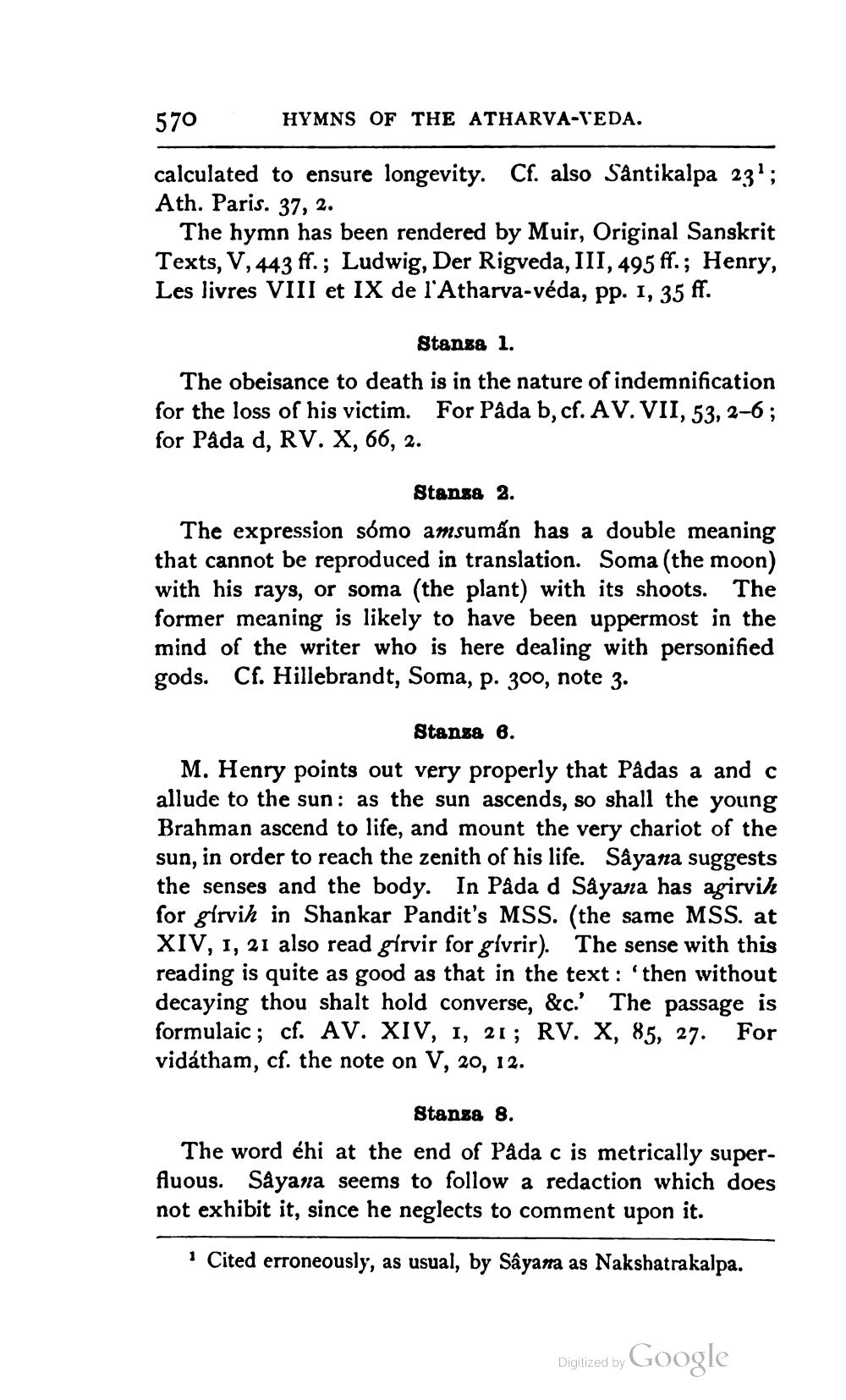________________
570
HYMNS OF THE ATHARVA-VEDA.
calculated to ensure longevity. Cf. also Sântikalpa 23?; Ath. Paris. 37, 2.
The hymn has been rendered by Muir, Original Sanskrit Texts, V, 443 ff.; Ludwig, Der Rigveda, III, 495 ff.; Henry, Les livres VIII et IX de l'Atharva-véda, pp. 1, 35 ff.
Stansa 1. The obeisance to death is in the nature of indemnification for the loss of his victim. For Pada b, cf. AV. VII, 53, 2-6 ; for Påda d, RV. X, 66, 2.
Stanza 2. The expression sómo amsumán has a double meaning that cannot be reproduced in translation. Soma (the moon) with his rays, or soma (the plant) with its shoots. The former meaning is likely to have been uppermost in the mind of the writer who is here dealing with personified gods. Cf. Hillebrandt, Soma, p. 300, note 3.
Stans& 6.
M. Henry points out very properly that Pådas a and c allude to the sun: as the sun ascends, so shall the young Brahman ascend to life, and mount the very chariot of the sun, in order to reach the zenith of his life. Såyana suggests the senses and the body. In Pada d Såyana has agirvih for girvih in Shankar Pandit's MSS. (the same MSS. at XIV, 1, 21 also read girvir for givrir). The sense with this reading is quite as good as that in the text: 'then without decaying thou shalt hold converse, &c.' The passage is formulaic; cf. AV. XIV, 1, 21; RV. X, 85, 27. For vidátham, cf. the note on V, 20, 12.
Stanse 8. The word ehi at the end of Pada c is metrically superfluous. Sayana seems to follow a redaction which does not exhibit it, since he neglects to comment upon it.
· Cited erroneously, as usual, by Sâyana as Nakshatrakalpa.
Digitized by Google




